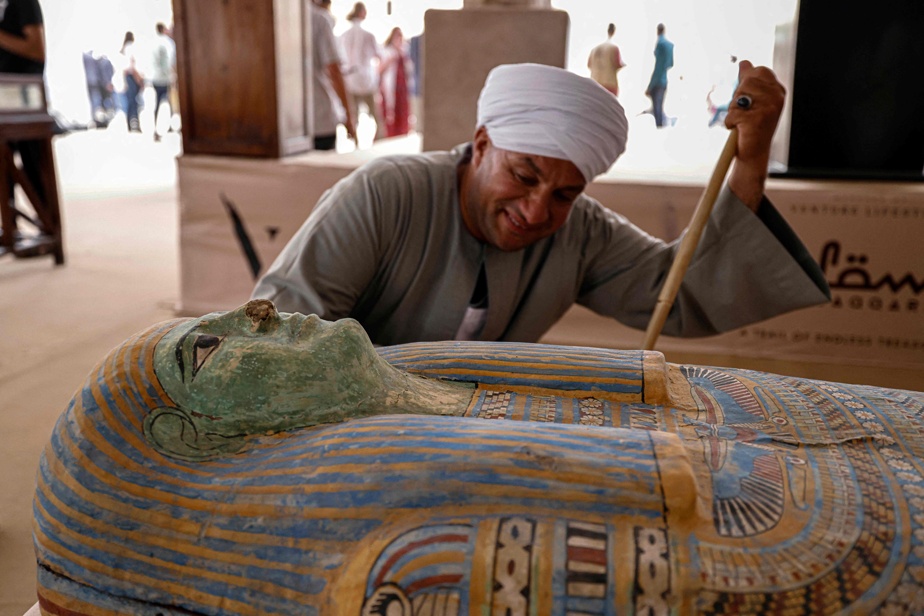(Saqqara) Egypt has unveiled two workshops dedicated to the mummification of humans and animals in Saqqara, in the necropolis of Memphis, the capital of the Old Kingdom of the pharaohs, “the largest and most complete” discovered nowadays.
The site of Saqqara, 15 kilometers south of Cairo and the famous pyramids of the Giza plateau, is a UNESCO World Heritage Site and is known for the famous step pyramid of Pharaoh Djoser.
These two workshops, one of which is devoted to the embalming of human mummies and the second to the embalming of “sacred animals”, date from the 30e dynasty and the Ptolemaic period, between 2400 and 2000 years, detailed the head of the Supreme Council of Antiquities, Mostafa Waziri.
The one dedicated to human mummification is “divided into several rooms equipped with layers of stone covered with plaster with gutters at their end of two meters by 50 centimeters on which the bodies were placed”, he further explained.
Egyptian archaeologists have discovered mummification instruments, earthen vessels and ritual objects there, as well as in the one dedicated to animals.
The ancient Egyptians embalmed mainly cats, but also crocodiles, and in March Cairo announced the discovery of more than 2,000 mummified ram heads as well as mummies of sheep, dogs, goats, cows, gazelles and of mongooses.
Two tombs, which belonged to the chief scribes of the 5e dynasty, 4400 years ago, and to a priest of the 18e dynasty that ruled Egypt 3400 years ago, have also been brought to light.
Both contain scenes of daily life and inscriptions in hieroglyphics, according to the Ministry of Antiquities.
Egypt regularly announces archaeological discoveries, qualified by certain experts as announcement effects having a political and economic significance rather than a scientific one.
Because the country of 105 million inhabitants in serious economic crisis relies on the tourism sector (two million jobs and more than 10% of GDP) to restore its finances. His government expects 30 million tourists per year by 2028, compared to 13 million before COVID-19.
